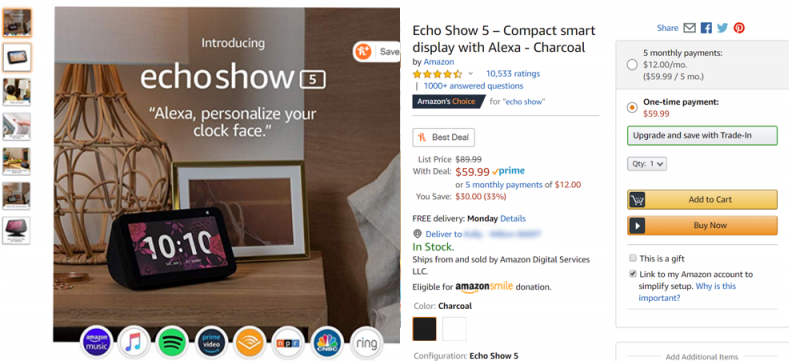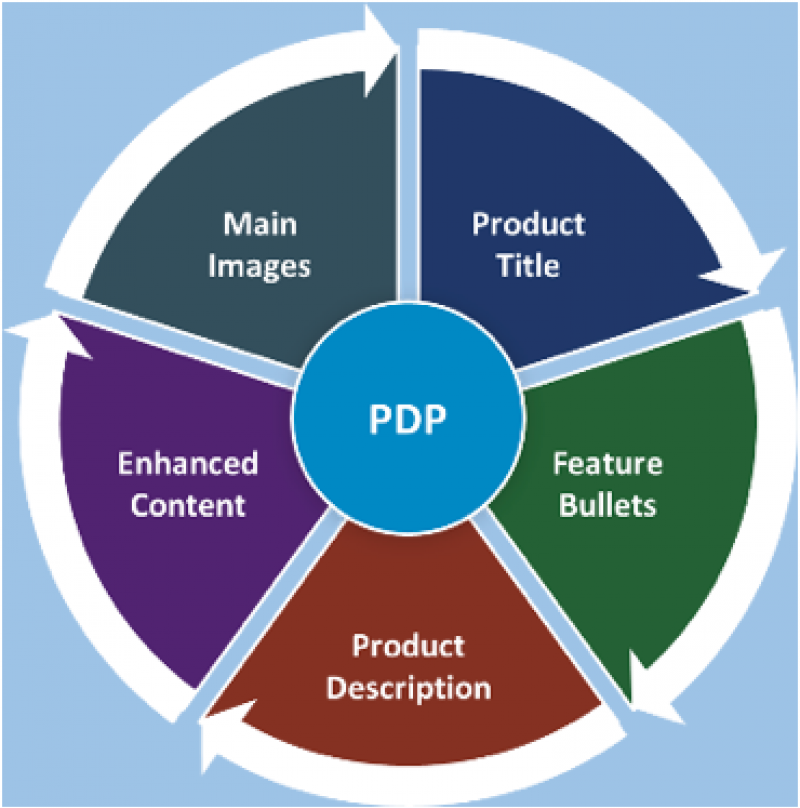Using e-commerce as a transactional sales channel is only the start
As sales and marketing leaders, we want to DELIGHT our consumers, WIN and GROW our brands by managing the interplay between offline and online worlds - the experiential and the transactional. While brick and mortar is the foundation, e-commerce is an essential component to deliver these goals.
But before we get in over our heads with a myriad of digital marketing tactics and selling channels, we should widen the lens through which we view eCommerce. We need to consider our understanding of the full Digital Ecosystem – and the best place to start is with a strong set of eCommerce fundamentals or basics.
The online world seems exciting and…complicated. But we can keep the framework simple.
Brands and Retailers should view eCommerce not as purely transactional/sales channel but rather as BOTH an audience reach/marketing AND transactional/sales digital ecosystem.
Amazon does this beautifully with its own products/devices. Here's an Amazon Sponsored Ad for Echo Show on the Amazon Home Page – delivering reach:

Which takes you to here:

If you are new to the eCommerce/omni-channel world, how do you know where to begin? Or even if you are already on the journey, how do you know you are headed in the right direction?
In this three-part series, OxfordSM will introduce simple ways to kickstart your “digital ecosystem” to drive a virtuous cycle of growth on (and off) line by:
- Getting the basics right – they are too often overlooked or maybe we think “we’ve got this!” – but do we really? If we don’t get this right, consumers can get frustrated and quickly go elsewhere.
- Driving traffic and awareness while building relationships – are shoppers motivated to find our brand and can they easily find it? How are we turning them into loyalists?
- Leveraging differentiators – how can we set our brand/our experience apart, so shoppers choose our brand and not our competitors both on and offline and therefore drive sales and loyalty?
Let’s face it, anything we do must reflect that consumers and shoppers are in control and engaging with brands and marketing messages across a myriad of devices and platforms on their terms.
This makes having an effective omni-channel and omni-present digital approach to brand building strategies and tactics is critical.
Step One – is a B2B approach – Back to Basics!

DO NOT advance to another step if your fundamentals are not in good shape! If you don’t, you risk frustrating your consumer and wasting digital marketing investment.
Caution: This is about managing your brand or category specifically in an online (retailer or DTC) environment. This is NOT about merely replicating offline activities online.
Before you can/should invest in all the “sexy” digital and even mass marketing tactics to amplify your website or sku’s to drive sales, you need to make certain your eCommerce basics (your digital shelves) are in perfect condition and already driving sales volume.
The #1 way to guarantee a positive experience and productive outcome (aka sales!) as consumers research and/or search for your product is to have a high-quality PDP = Product Detail Page.
WHY?
Plainly stated, the PDP is where a consumer decides whether to engage and buy your item…or bounce from your site or your retailer’s site…even potentially to a competitor’s site.
Driving more traffic to a suboptimal product page experience will not drive more sales. In fact, it can have a negative impact.
If you end up sending shoppers to your competitors’ sites, and you may end up wasting your precious marketing dollars.
So, how can you ensure that your PDP’s are optimized?
Simply explained, there are 5 main elements to the Product Detail Page that need to be carefully planned and executed:
- Product Title – should follow retailer specs and include critical keywords to facilitate organic search
- Feature Bullet – succinct, consumer-friendly bullet points above the fold that describe key product benefits in consumer (not manufacturer or retailer) language
- Product Description – more details than above to clearly describe the product characteristics
- Enhanced Content – Ratings & Reviews, Videos, Comparison matrices across models, Q&A
- Main Images – “Hero” product image, what’s in the box, lifestyle thumbnails above the fold, etc.

When creating a quality PDP you can’t just “set it and forget it”.
Like any good retail store location, the digital shelf needs to be maintained and upgraded. And there is a lot that goes on behind the scenes to be sure this happens: digital analysts, eCommerce team members and marketers using analytics and monitoring tools to continuously review critical sku’s, optimize content, images, keywords, etc.
These tools can help track the impact of content testing, establish a foundation for competitive benchmarking, or just facilitate structured weekly KPI monitoring and reporting.
Conversion is the name of the game and high-quality PDP’s will drive more conversions from existing traffic.
In our next issue of this series, we will discuss: How to Drive Traffic and Awareness.
Once the BASICS are in place, you can move to Step Two, DRIVING (more) TRAFFIC to your perfect PDP’s! More qualified traffic to a premium consumer experience leads to more conversions/sales – and that’s the goal – isn’t it?
Please contact us and let us know how we can help you evaluate opportunities to optimize your digital ecosystem, delight your consumers and drive profitable growth and market share.
Share this
You May Also Like
These Related Stories

Basics in Place? Time to drive qualified traffic and sales

How to make your eCommerce destination stand out from the crowd

.png?width=657&height=57&name=OXFORD%20LOGO%20(1).png)
No Comments Yet
Let us know what you think